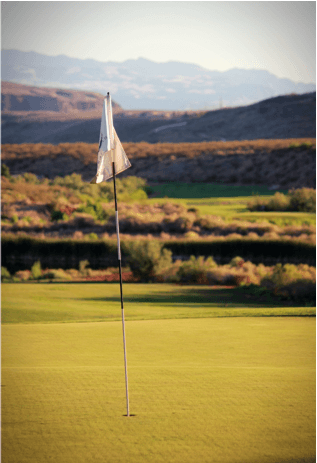Part 2: How Balance Plays a Critical Role in Improving Your Score and Preventing Injury
By: J.C. Moreau
Website: TheStrengthU.com
For part two of our installment on performance training for golf we will examine a topic that I personally found somewhat confusing, largely due to my lack of playing experience (and perhaps more importantly ability) as it pertains to the sport of golf. Balance has been at or near the top of the list of physical qualities that each golf coach I have worked with said they would like developed in their golfers. I believe this word is misinterpreted by many who are not familiar with “golf jargon”, I remember asking myself as a young coach “How often do golfers get run into or pushed during their back-swing?” The answer is obviously never, but the point is that I associated the word balance with football, basketball or soccer balance, or the ability to stay on your feet when hit or “tripped up”. In the sports performance realm balance could also be defined as structural symmetry. For example, when performing a movement screen we are looking for imbalances and asymmetry, or a lack of balance. Ultimately the goal of any good strength and conditioning program should be the correction of asymmetry, resulting in structural balance. What I have learned is that in golf “balance” consists of parts of each, as well as a word that I feel may more accurately describes what these coaches were looking for…stability.
Stability, or the ability to maintain a variety of positions, angles, weight shifts and separation throughout the entire swing incorporates athletic components of each of the definitions above. However, stability plays a role in nearly every segment of the golf swing. There are many great golf coaches who believe that one of the best ways to improve your swing is to be able to hold each position, with great balance and stability, from the back-swing all the way to the follow through. Although this may sound easy to the non-golfer, anyone who has ever swung a club (or in my case hacked) knows how difficult it is to find the correct positions, let alone holding them. To do so requires tremendous mobility/flexibility and balance/stability, today we will focus on stability in the second segment of our series.
Stability is the ability of any system to remain unchanged, or aligned with the introduction of some sort of change or external stimulus/force. There are three characteristics required to create proper stability in various joints or body parts. They are balance, strength and muscular endurance. As it pertains to golf the ability to stabilize the lower body and spine is directly related to gluteal and abdominal strength. Since the gluteus maximus is the prime stabilizer of the pelvis it is a critical to develop this powerful muscle in order improve the stability and strength of your swing. The ability of balance on each leg, especially on the lead side is paramount for proper weight shift to occur. Limited weight shift toward the lead leg will reduce the lower body’s contribution during the golf swing, and much like it is with baseball, hockey or tennis, when the lower body does not generate adequate power it is natural to compensate by trying to produce excessive upper body power. The result in all of these sports, and certainly golf, is always a technique/swing flaw, such as coming “over-the-top”.
As much as the glute max plays a large role in pelvic stability the gluteus medius plays an equally important role in lateral stability. It has been my experience that performance coaches often overlook this vital muscle, largely because they believe that it receives adequate training during major leg exercises such as squats, lunges, step ups and deadlifts. However, it often requires specific attention to be isolated, but it is crucial to strengthen this hip abductor. Failure to do so has shown to lead to a “sway” or “slide” movement, which is defined as excessive lower body movement towards or away from the target. In both cases either the back-swing or downswing is impacted negatively and can only be corrected with proper strength training designed to improve balance and stability in each leg and the hip stabilizing glute musculature.
When balance and golf are discussed in performance circles I have a much better grasp of exactly what golf coaches and players are describing now and it is important to note that improving balance is far more than mastering the ability to stand on one leg. Rather it is the result of a comprehensive sports performance program that addresses your individual weaknesses and areas that display excessive tightness. This requires a qualified and experienced coach who performs a movement assessment, prescribes correctives exercises to your workout. All of this is in addition to a full body workout that develops the body as a functional unit, and develops a strong fitness base and addresses proper sports nutrition, recovery and regeneration. In our next installment we will look at some of the more common “Syndromes”, which are commonly seen groups of muscles that are wither tight or weak that negatively impact the golf swing.
In concluding, it is critical for a golfer to develop fantastic balance in order to maximize their potential, however balance must be seen as more than the ability to stand on a “Bosu” ball or “airex” pad, but rather the ability to stabilize the joints and limbs necessary to literally hold each position throughout the entire range of motion of a golf swing. This is far more challenging than it sounds, but the positive in this message is that strength and mobility are easily correctable when identified (baring a structural or tissue limitation). A strong emphasis on strengthening the glutes, muscles of the hip girdle, hamstrings, core and lumbar region, as well as specific unilateral leg training for strength and balance, and finally continue to develop endurance along with strength to ensure that golf performance is improved for an entire round or tournament and not simply for the first few holes. I have always love the expression “Consistency- The Mark of a Champion” and this is another great example of that. Progress can be made by anyone for a month or two, but it is those who continue to develop, grow and improve that become champions!
Please send comments and questions to Email JC or call 479-530-8254



